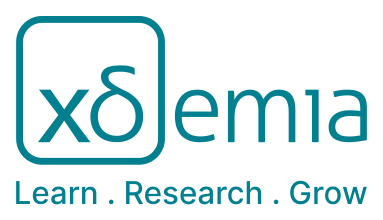Control Hardware in the Loop Testing of High Power DC DC Converters
3 Enrollments Level : AdvancedRelevance
Control-Hardware-in-the-Loop (CHIL) testing has emerged as a crucial methodology for validating the control systems of power electronics without requiring full-scale prototypes. As the demand for reliable and efficient power conversion increases, the complexity of control strategies grows in order to ensure stability, robustness, and fast dynamic response under varying operating conditions. Conventional hardware testing is often costly, time-intensive, and limited by safety concerns, highlighting the need for advanced testing approaches.
By integrating real-time digital simulation with actual control hardware, CHIL provides a safe and cost-effective testing environment that accelerates development cycles and enhances design reliability. For high-power DC-DC converters in particular, CHIL enables thorough validation of fault scenarios, transient behavior, and grid-support functionalities, thereby bridging the gap between simulation and field deployment.
Abstract
This building block provides practical insights into the workflow and methodology of controller development for power electronics. It introduces Control-Hardware-in-the-Loop (CHiL) testing, outlines its core use cases, and explains why it is such a powerful approach for software development. Different code development techniques are then presented, with a detailed comparison of their applicability in both industrial and research contexts. Furthermore, a broad range of generalized testing methods is covered, enabling engineers to effectively validate and verify developed code. The theoretical foundation of this building block is drawn from real-world industrial experience in developing production-ready code and can be generalized and directly applied to the engineer’s workflow. Finally, the laboratory exercise provides hands-on opportunities to investigate and debug existing firmware in preparation for CHiL commissioning—an essential step prior
Learning Outcomes
The participant gains knowledge of Control-Hardware-in-the-Loop (CHiL) testing.
The participant understands code development methods for controller design.
The participant learns generalized testing methods and efficient workflows to verify and validate power electronics control software.
The participant is able to effectively debug firmware.
Prior Knowledge
Fundamentals in power electronics (e.g. semiconductor switches and diodes, principles of efficient power conversion).
Fundamental knowledge about the operation of DC-DC converters (e.g. PWM modulation, steady-state analysis, transient analysis) Fundamental knowledge about the operation of DC-DC converters (e.g. PWM modulation, steady-state analysis).
Fundamental knowledge about the real-time simulation setup.
Simulink/PLECS/C-programming (recommended but not necessary).
Keywords
- DC DC Converters
- Medium Voltage DC Grids
- Power Converter Control
- Modular Converters
- Control hardware in the Loop
Elements
1. About this Building Block
About this Building Block
Description of the Building Block
2. Reader
reader
Delivers the basic knowledge about the topic. Introduces the reader into the topics of Control-Hardware-in-the-Loop Testing of high power DC-DC converters. The learned knowledge is deepened with the presentation and video.
3. Presentations
presentation
PPT is further material to understand the topics of the reader. The material is not completely the same, some topics are highlighted more in detail in the slides and the video.
4. Video and knowledge clips
Video and Knowledge Clips
The video explains the PPT in detail. It gives the students more insights and more explanation.
5. Exercises
exercises
The participant will learn the fundamentals of control devilment specific to power electronics.
6. Simulations
simulations
The simulation builds on the exercise. There the students can investigate the operation of complex systems described in the reader. Furthermore, both knowledge gained of the reader and exercise part are used here. The simulation combines the most complex parts of the BB and should be done at after the reader and exercise. Since the simulation can be done interactively, students can investigate what happens to the converter operation and control when changing parameters.
7. Self-assessments
Self assessments
Self-assessment to evaluate by oneself the level of understanding that has been gained from the building block
